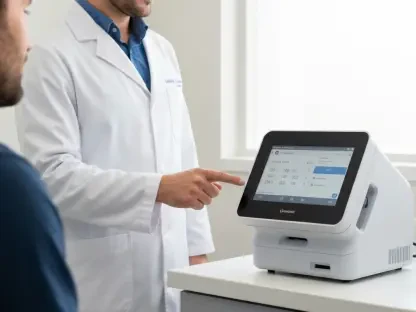What if the very devices often criticized for draining mental energy could instead be a secret weapon for preserving brain health in seniors? Picture a 70-year-old grandmother, once hesitant to touch a smartphone, now confidently video-calling her grandchildren across the country and solving daily puzzles online. This scenario is becoming more common, and recent research suggests it’s more than just heartwarming—it’s a potential game-changer for cognitive vitality. A groundbreaking study has turned conventional wisdom on its head, showing that technology might be an unexpected ally for aging minds.
The Rising Stakes of Cognitive Health
As the global population of older adults continues to grow, the urgency to address cognitive decline and dementia has never been greater. Millions face the risk of losing mental sharpness, placing immense pressure on healthcare systems and families alike. Finding accessible, everyday solutions to maintain brain health is no longer just a hope—it’s a necessity. Technology, once viewed as a hurdle for seniors, is now stepping into the spotlight as a surprising tool to combat these challenges.
The significance of this shift cannot be overstated. With dementia rates still a major concern despite some regional declines, innovative approaches are critical. Digital engagement offers a pathway that’s not only practical but also widely available, potentially reshaping how society supports mental wellness in later years. This emerging trend demands attention, as it could redefine aging in the digital era.
Technology as a Mental Gym for Seniors
Diving into the research, the cognitive benefits of technology for older adults are striking. A comprehensive analysis of 57 studies, encompassing over 411,000 participants and published in a leading scientific journal, revealed that nearly 90% of these studies connected technology use with enhanced cognitive performance and reduced dementia risk. The act of learning to navigate digital tools—whether it’s a smartphone app or a software update—serves as a rigorous mental workout, keeping the brain active and adaptable.
Beyond mere numbers, the mechanisms behind these benefits are multifaceted. Adapting to ever-evolving tech challenges problem-solving skills in ways traditional activities might not. Additionally, digital platforms support functional independence through tools like online banking or reminders, which help offset memory lapses. Yet, risks such as online scams or excessive screen time underscore the importance of moderation, ensuring that engagement remains a positive force.
Voices from the Field and Personal Triumphs
Experts are increasingly vocal about the transformative potential of digital tools for brain health. Cognitive neuroscientist Michael Scullin, a key researcher behind the landmark study, asserts, “The evidence is clear—technology isn’t just neutral for older adults; it often actively supports cognitive resilience.” Echoing this, Murali Doraiswamy from Duke University highlights, “The constant need to keep up with tech changes acts as a unique form of brain training for this generation.”
Real-life stories bring these insights to life. Consider Wanda Woods, a 67-year-old who evolved from a tech novice to a confident instructor. Her journey—mastering everything from early word processors to modern AI chatbots—demonstrates how sustained digital learning can sharpen mental acuity. Such personal victories illustrate that technology isn’t just a tool but a gateway to renewed purpose for many seniors.
Everyday Strategies for Digital Engagement
For older adults ready to explore technology’s brain-boosting potential, practical steps can make the transition smooth and beneficial. Starting with simple, familiar devices like tablets is a great entry point. Focusing on basic tasks such as sending messages or browsing the internet builds confidence, and many local community centers now offer free classes tailored to seniors’ needs.
Continuous learning is another key strategy—tackling a new app or feature regularly mimics the cognitive challenges seen in research. Prioritizing social connection through video chats or social media also enhances emotional and mental well-being. Safety remains crucial, so learning to spot scams and securing personal data, often with help from trusted family, is essential. Finally, setting limits on screen time ensures a balance with offline activities, preventing fatigue or isolation.
Looking Back and Stepping Forward
Reflecting on this journey, the shift in perception about technology’s role in aging is nothing short of remarkable. What was once seen as a barrier became a bridge to mental vitality for countless seniors. The stories of individuals like Wanda Woods, paired with robust research, paint a compelling picture of digital tools as protectors of cognitive health.
Moving ahead, the focus turns to ensuring these benefits reach more older adults through accessible training and support systems. Addressing risks like online fraud with better education emerges as a priority. As technology continues to evolve, the challenge is to sustain this momentum, empowering seniors to adapt safely and confidently to whatever innovations lie on the horizon.









